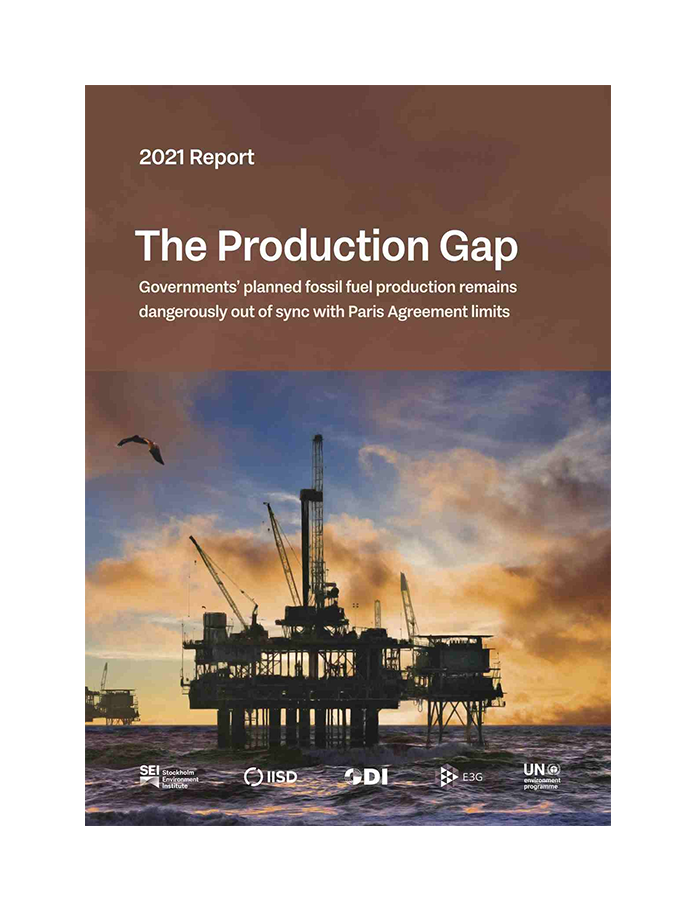Do we need another COP?
If no, then what?
The seventh Scotia Group dialogue
The first six Scotia Group dialogues took the form of presentations by experts in fields related to climate change, followed by an off-the-record majlis where the members could talk frankly about what they’d just heard – and whatever else was on their minds.
The seventh and final dialogue was different. It was a debate about whether the UN’s COP negotiations were doing what they were set up to do, moderated by Pilita Clark, an associate editor of the Financial Times. And because this question is complicated and contested, and because the panel members were made up of two COP sceptics and two COP defenders, the debate was, to say the least, lively.
The meeting took place under the aegis of Oxford University’s Smith School for Enterprise and Environment, 10 days before the start of the Glasgow conference. It was introduced by Professor Cameron Hepburn, the director of the Smith School, who made the point that the parties to the UN Framework Convention on Climate Change have now met 25 times – which means that
world leaders have had a quarter century to agree a plan to ensure that global warming is kept to a level that we can live with
So, the debate was about how we should interpret this record, and what it suggests about the future of the convention. As Cameron put it: “I think it’s reasonable to ask whether we have the right process in place for making progress. Some people would say, clearly we don’t:
emissions have been going up and the system is still predominantly based on fossil fuel
– are we on track? No.
“On the other hand, you could make the opposite case: renewable energy technologies have crashed in cost, net-zero targets abound, countries become international pariahs if they don’t set a target, and we’re gathering in Glasgow to get ourselves on track.”
Where, then, does the truth lie?
A BRIEF HISTORY OF CONFERENCES PAST
The first speaker was Adil Najam, a distinguished academic presently based in Boston, and a veteran of around 20 previous COPs. He began proceedings with a brief history of the UN’s climate process that we will quote at some length, since it gives a battle-scarred insider’s view of how we got to where we are now, and what we’re up against when we try to go further.
Adil began by drawing the meeting’s attention to the fact that
the nations who will come to Glasgow are parties to a framework convention
What is the meaning of the word “framework”? In fact, it’s there because of the failure of the first attempt to agree a deal on carbon emissions. This was carried out by a now-forgotten body called the International Negotiating Committee, set up in 1991 to prepare the ground for the 1992 Rio Earth Summit.
After five meetings, the administration of George HW Bush scuppered those efforts, and the framework convention was drafted to occupy, on a permanently temporary basis, the place where a treaty would have been.
Adil Najam
Adil is the inaugural dean of the Frederick S Pardee School of Global Studies at Boston University. He is also a professor of international relations and of earth and environment. He previously served as the vice chancellor of the Lahore University of Management Sciences, and has gained extensive experience of international climate negotiations.
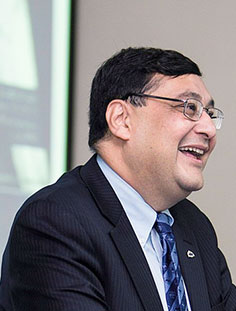
Adil Chishti | CC BY-SA 3.0
According to Adil, the framework is a wonderful document that says
“we the countries of the world agree that, at some time in the future, we will come to an agreement that we can’t tell you about right now to reduce atmospheric carbon to some level that we cannot specify by means that we have not yet decided”.
So, what we have is the skeleton of a deal that the parties have spent 30 years trying to flesh out.
Some progress has indeed in been made, but the milestones sometimes look more like tombstones. One particularly traumatic experience was COP3, held in Kyoto in 1997, which created a binding protocol that required 36 industrialised nations and the EU to cut their greenhouse gas emissions to 5% below 1990 levels by 2012. China and India were not asked to sign it, the Europeans quietly loathed it and the administration of George W Bush withdrew from it.
No sooner was Kyoto dead and buried than its ghost rose to haunt subsequent conferences, filling them with a sense of futility and ennui as politicians and officials shuttled from Buenos Aires to Marrakech to simulate negotiations and dissemble their lack of results.
The next authentic attempt to negotiate did not come until COP15, held in Copenhagen in 2009. Here, the Danes did try to make meaningful progress. “Many people see it as a failure, Adil noted.
“You see the famous photo of President Obama and Chancellor Merkel huddling together to slash any chance of an agreement that would have required legally binding targets, and the agreement did not come.”
After that, the idea of legally binding international agreements was effectively over, once and for all.
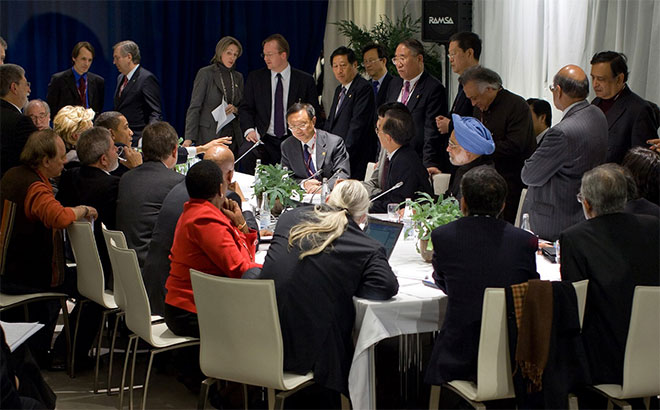
Copenhagen ’09. How hard did President Obama try to get a deal? Pete Souza | Public domain
What did emerge from Copenhagen was a promise by industrialised countries to provide $30bn for the period 2010-12,
and to mobilise a further $100bn a year by 2020 “from a variety of sources” – of which, more later.
The next and latest milestone was, of course, the Paris Agreement, reached six years later. This was based on the mechanism of voluntary targets – “nationally determined contributions”, as they were called – assessed on a five-year cycle, with each subsequent target intended to be tougher than the one before. There was also an agreement – of the framework variety – to provide financial aid for “capacity building” in less developed countries.
THERE WAS ALSO AN AGREEMENT TO PROVIDE FINANCIAL AID FOR “CAPACITY BUILDING” IN LESS DEVELOPED COUNTRIES
As we have come to expect, the US withdrew from the agreement two years later, this time on the orders of a president who, to the extent that he had a fixed opinion on this or any subject, regarded global warming as “a hoax”.
Adil’s final point in his decidedly downbeat assessment was that although the annual conferences appear to provide a forum for less developed countries to state their cases and needs, in practice they are controlled by the major powers, and such progress as is made is the outcome of their calculations and their horse-trading.
WHO’S TO BLAME?
The next speaker was Ingrid Barnsley of the OECD, who argued that conferences may not be perfect, but they are certainly better than nothing. It’s true that the question of mitigation – cutting emissions – tends to capture everyone’s attention, she said, but
we have to remember that the conferences also address equally important issues such as adaptation, liability for loss and damage, and technical matters such as greenhouse gas accounting, finance and technology transfer.
Ingrid Barnsley
Ingrid is deputy director of the Organisation for Economic Cooperation and Development’s environment department, and leads its work on the International Programme for Action on Climate. Ingrid moved to the OECD from the International Energy Agency where she spent 10 years in roles such as senior counsellor in the Energy Economics and Investment Office and head of International Partnerships. She holds a doctorate in public international law from the University of Oxford and lectures in that subject at the University of Tokyo and the American University of Paris.
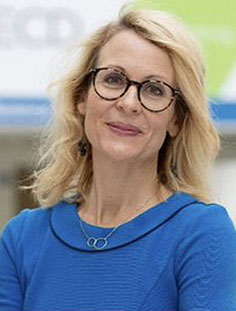
She made the further point that multilateral bargaining festivals like COP always produce sub-optimal results, but the blame for that should not be laid at the door of the UN – all it does is provide the rooms and the coffee. It’s the parties that set the goals and the means of achieving them.
Her last arrow was aimed at critics who complain about the bad faith of institutional actors while driving nice cars and taking several holidays a year in Ibiza.
“Until we make significant change at the whole-of-government and whole-of-economy level – with every one of us accepting that we need to change our lifestyle – the COP will not solve the climate challenge.”
THE PLACEBO EFFECT
The entrance of the next gladiator was preceded by this memorable introduction from Pilita Clark.
“Adam, I want to turn to you now, because you’ve written a pamphlet comparing the climate crisis to the rise of the Third Reich and COP26 to the 1938 Munich conference. I wonder if you could explain your argument for us?”
Any scheme of any kind for disarmament, put forward by any country, so long as it is surrounded by suitable phraseology, is hailed by them, and the speeches are cheered, and those who speak gain the mead of their applause. Why do they not look down beneath the surface of European affairs to the iron realities which lie beneath? …
The expectation of general disarmament upon a great scale has failed. The hope of one nation being able to disarm its rival has been frustrated by the very stout and stubborn resistance which every nation makes to that process. Now, I am afraid that a large part of the object of every country is to throw the blame for an impending failure upon some other country while willing, if possible, to win the Nobel Peace Prize for itself … The process is apparently endless, and so is the pathetic applause with which it is invariably greeted.
Adam’s uncompromising and unqualified contention is that UN conferences have not changed the trajectory of climate change in any significant way. Nor have they given rise to the unsung successes that Ingrid referred to. “I don’t think the developing world has seen one penny from this process. I don’t think we’ve seen any technology transfers, let alone the objective of obtaining legally binding commitments that countries then honour. I think we can say it’s been a complete and catastrophic failure.”
The problem is that
the conferences act as a placebo, offering psychological benefits but not changing the “iron reality” underlying surface appearances
– in this case, the measurable fact that the rate of increase of atmospheric carbon dioxide has grown at a steady pace between 1950 and 2020 and is now rising at the fastest rate in modern times.
We should therefore recognise failure when we see it. “We sort of did that after Copenhagen, but it didn’t change our desire to have more conferences. But if Glasgow goes ahead and does not succeed in keeping 1.5 alive – which it will not – then let’s be honest about it.”
Adam Parr
Adam is an investor and entrepreneur based in Oxford, and a former chief executive of the Williams F1 team. He has worked in the fields of finance, law and industry, and has been based in Japan, Australia, Africa and Europe. He now chairs Oxford Semantic Technologies, an AI offshoot from the University of Oxford, and is a director of Apolitical, an online platform for public service learning and networking.
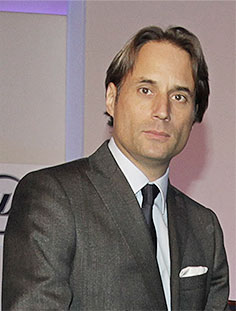
LyndseyWF1 | CC0
Adam’s alternative is simply to abandon multilateralism, whether carried out by the COP or the G-20, and put all our faith in unilateral action. No country needs permission to do things such as impose a carbon duty on imports, as the EU is doing and the US is considering. “There are important things that could have been done to stop the Second World War, and there are things that could be done today to tackle climate change, but
because of the illusion that there is a process in place to deal with it, we’re not doing the things we need to.”
This point about a carbon duty on trade – the “carbon border adjustment mechanism”, as it is called – may gain traction in the US and Europe since it allows countries to punish China for being the world’s largest source of atmospheric carbon, and also fits with Washington’s geopolitical imperative of slowing the rise of a peer competitor.
Together, America and Europe import over a trillion dollars of Chinese goods “and we have every right to demand that what we buy is consistent with our survival as a species. That is not an unreasonable request.”
NOT AS BAD AS ALL THAT
The next speaker was Tom Hale, an academic with a long record of researching the kind of multilateral institutions that attracted such scorn from Adam. What, Pilita wondered, could he say to defend them?
Tom responded with a quote from Christiana Figueres, the Costa Rican diplomat who probably did more than anyone to turn defeat at Copenhagen into victory in Paris. She said:
“Climate change requires us to hold two competing ideas in our minds. One is that we’re not doing enough; the other is that we’re doing more than we thought possible.”
Thomas Hale
Thomas is associate professor of Global Public Policy at Oxford’s Blavatnik School of Government. His research interests include the management of transnational problems and the evolution of political institutions with an emphasis on globalisation and interdependence. He holds a PhD in politics from Princeton University and has studied and worked in Argentina and China. His books include Gridlock: Why Global Cooperation is Failing when We Need It Most, Beyond Gridlock and Transnational Climate Change Governance.

In fact, Tom argued, the UN conferences have achieved much more than critics such as Adam Parr are willing to admit. For one thing, multilateral agreements can proceed in parallel with unilateral action; it’s not either/or.
And once the idea of a legally binding regime met its end at Kyoto and Copenhagen, the emphasis shifted to solving the problem by forming coalitions of the willing that gradually grew to achieve critical mass.
This, Tom said, was an altogether more flexible and creative way of going about changing behaviour, and it’s a testament to the effectiveness of the COP process that it was able to adapt to this different kind of logic. As Tom’s work has shown, most multilateral regimes ossify over time.
Furthermore, Paris may not be legally binding, but it has had the largest effect of any agreement so far on countries’ behaviour. The UN’s official registry shows, at the time of writing, that
194 parties have submitted their first NDCs, and 13 have declared their second, “ratcheted up” targets
The bottom line? Before Paris we were on a trajectory towards a 4 or 5°C rise in average global temperatures; afterwards, this was more like 3°C. “It’s a catastrophe, to be fair, but it’s much less of a catastrophe than it would have been.” The task for the Glasgow, therefore, is the by now familiar one of flattening the curve.
Where Tom did find common ground with Adam was on the impact of climate change policy on other areas, such as geopolitics and trade. This, he implied, is a good thing, despite the risk that imposing environmental penalties on states such as China may subordinate the environmental debate to geopolitical rivalries, thereby harming the chances of cooperation.
This defence of the COP process led to a challenge from Pilita. She referenced the UN Environment Programme report that showed how out-of-step government commitments to limiting global warming were with the plans of their fossil fuel industries.
Was there not a danger, as Adam maintained, that Glasgow will give people a false sense that progress is being made when in reality it isn’t?
The historical record of atmospheric carbon, as measured by the US National Oceanic and Atmospheric Administration in Hawaii. It is also a way of judging the success or otherwise of international negotiations.
HUGE PROGRESS IN MANY AREAS
“Over the next two decades, governments are collectively projecting an increase in global oil and gas production, and only a modest decrease in coal production. Taken together, their plans and projections see global, total fossil fuel production increasing to at least 2040, creating an ever-widening production gap.
“The devastating impacts of climate change are here for all to see. There is still time to limit long-term warming to 1.5°C, but this window of opportunity is rapidly closing,” says Inger Andersen, Executive Director of UNEP.
“At COP26 and beyond, the world’s governments must step up, taking rapid and immediate steps to close the fossil fuel production gap and ensure a just and equitable transition. This is what climate ambition looks like.”
Tom responded that huge progress has been made in many areas: the UK has reduced its emissions by half over the life of the COP, and that wouldn’t have happened otherwise.
We can admit that the process is not enough, but as Ingrid also argued, it makes more sense to work out how to improve it than abandon it altogether.
Pilita than picked up on another of Adam’s claims, that less developed countries had not “seen a penny” from the COP process. Was that true?
Ingrid’s somewhat cagey response was that this was not factually correct. The mechanisms could definitely work better, but between Copenhagen’s Green Climate Fund and Kyoto’s Adaptation Fund and the Clean Development Mechanism, finance and technology had indeed been transferred. We are also, she claimed, getting closer to agreeing the $100bn Climate Finance Goal put forward at Copenhagen. More generally,
the COP process has now given us quantitative goals, we have some reference to time, we have information on how countries plan to achieve their carbon targets and we have a lot of domestic legislation. All of these developments are the fruits of the COP
BETWEEN COPENHAGEN’S GREEN CLIMATE FUND AND KYOTO’S ADAPTATION FUND AND CLEAN DEVELOPMENT MECHANISM, FINANCE AND TECHNOLOGY HAS INDEED BEEN TRANSFERRED
Secretary-General of the United Nations, Ban Ki-moon addressing COP16 in Cancún UN | CC BY 2.0
More generally – and contrary to what Adam said – multilateral negotiations are needed to make unilateral actions effective. Ingrid backed this up by addressing Adam’s carbon border adjustment mechanism – known in the trade as a CBAM (pronounced See-Bam).
If the US imposed a CBAM what would be the effect? In fact, the future explosion in energy generation is likely to come not from China, but from India, Africa and Southeast Asia. These regions contain most of the world’s developing economies, all of them will look to export manufactured good to the US, and all of them will be hurt by carbon penalties.
“So if we want to use a unilateral measure to punish countries that need to be able to export, we could do so, but we won’t be helping them on their course to development. Adam himself pointed out that any good CBAM would include some recognition of domestic efforts to decarbonise. How does that happen? Only through a multilateral discussion to establish equivalency of effort.
So, it’ll require that a multilateral process be implemented to avoid unfairly penalising less developed countries.”
FACT CHECKING
Pilita next solicited Adil’s opinion on the $100bn Climate Finance Commitment, which was vaguely agreed at COP16 in Cancún, Mexico, in 2010. Did Adam have a point that the COP process hasn’t worked to deliver money? And hasn’t the size of the sum – paid annually – been one reason why COP negotiations have been “so intractable”.
Adil, whose attitude to COP is generally aligned with Adam’s, agreed wholeheartedly. “No, it hasn’t worked,” he said. “I agree with a lot of what Ingrid said, but none of the funding mechanisms she mentioned has been fully funded.
Less developed countries are not seeing that money.”
Really? None of it? “If the question is ‘has any money been spent’, I’m sure the answer is yes. Developing countries with hardly any emissions have compiled huge carbon inventories, in exchange for which they got $20 towards ‘capacity building’.”
This lamentable state of affairs is possible, Adil went on, because developing countries make promises that they have no intention of fulfilling. “Nobody believes that $100bn will really be handed over. It’s a PR exercise. The rich countries have realised that they can promise whatever they want at a COP because they don’t have to answer to a domestic constituency or an international body.
I think a binding multilateral agreement is the only way we can solve this.
Otherwise we will just have cop-outs.
Paris was a cop-out because countries verified their own performance, thereby marking their own homework.
As a citizen of the world, I want to see if a country’s emissions go down or not. I haven’t see that.”
Adil’s conclusion was that the only business future COPs should do is to work their way through 26 years of unkept promises, which he backed up with the modest proposal that sanctions be imposed on the passports of nationals whose governments fail to meet their commitments …
NOBODY BELIEVES THAT $100BN WILL REALLY BE HANDED OVER. IT’S A PR EXERCISE
CONCLUSIONS
And so we came to the panellists’ closing remarks. Ingrid allowed that taking binary positions made for entertaining debates, but the reality was that there is a big difference between saying no money has gone to developing countries and saying, as Adil did, that promises have not been met – which she admitted had consistently been the case.
“What we need to do is have a more effective conference where developed countries in particular are more accountable and there’s more transparency.
“I also suggest they should be less ambitious in their pledges, since everyone gets carried away with the party atmosphere and then wakes up with a hangover. There is more honesty in saying, as Canada and Australia have, that they’re not going to sign up because they don’t think they can meet the requirements.”
She ended with a brief encomium to the work of the OECD, which she said had done more than most to hold donor countries to their spending pledges. The Donor Delivery Plan, she said, was an important element of transparency, although even here there is some confusion over what the figures mean and whether private capital mobilised by pump priming should be counted in the total disbursed.
Tom ended his contribution by noting that Paris is “growing teeth”, despite (or because of) the lack of legally binding agreements. He cited the fact that roughly two-thirds of the world economy now falls under net-zero carbon pledges, there have been important changes in the regulation of private companies, and the UN’s reports had had a definite impact on the Milieudefensie case (discussed at length in past dialogues). What’s more, the International Standards Organisation has said it will review its 24,000 standards to check if they align with the Paris Agreement.
So, little by little, the COP is having an influence on the way the entire global economy is structured
Neither Tom’s remarks, nor anybody else’s, cut much ice with Adam. He returned to his point that only unilateral national action had any hope of being effective, and if we must hold multilateral events such as conferences of the parties, they have to produce clear rules that business can use to plan and invest.
The only point he strongly agreed with was a remark from Adil, who pointed to the difference between countries’ actions on climate change and their response to the Covid-19 pandemic.
THIS SHOWED WHAT CAN BE DONE WHEN NATIONS ACTUALLY WANT TO MOBILISE RESOURCES TO MEET AN EXISTENTIAL THREAT
This, Adil said, showed what can be done when nations actually want to mobilise resources to meet an existential threat, rather than just looking as though that’s what they’re doing. “A trillion dollars was raised in days and spent in weeks.” Adam interpreted that as showing, once again,


